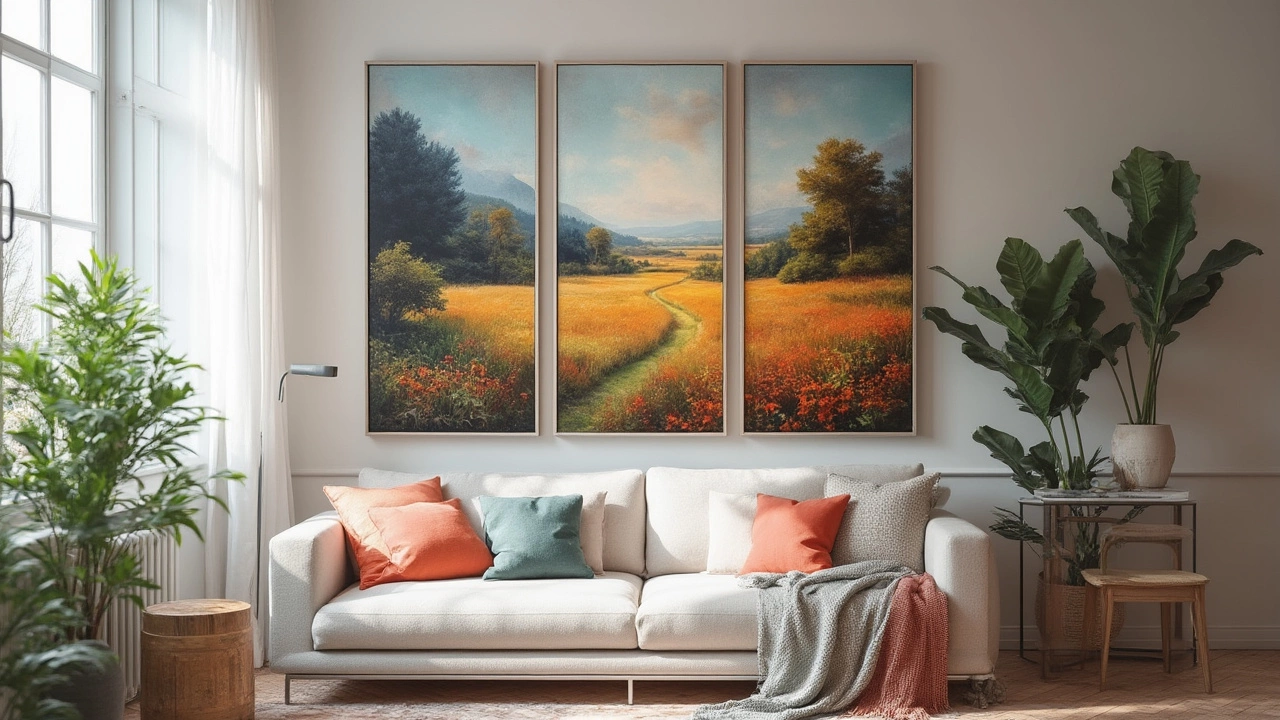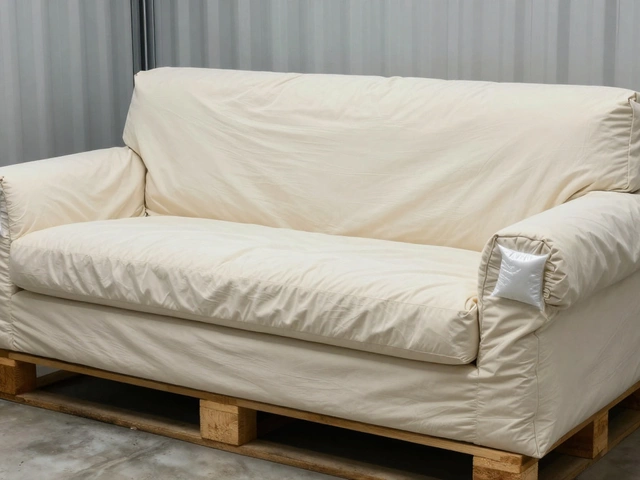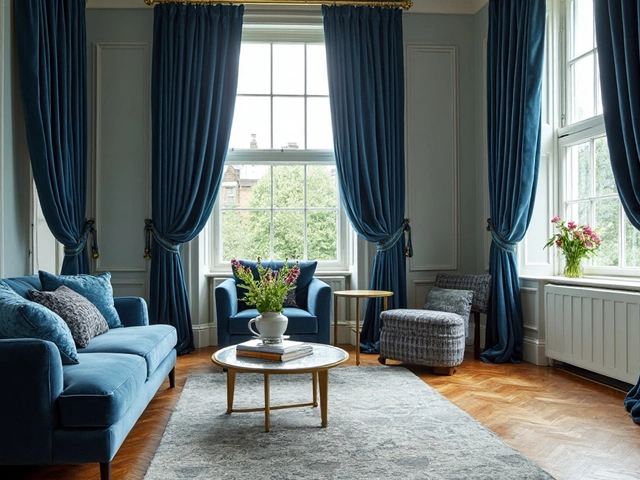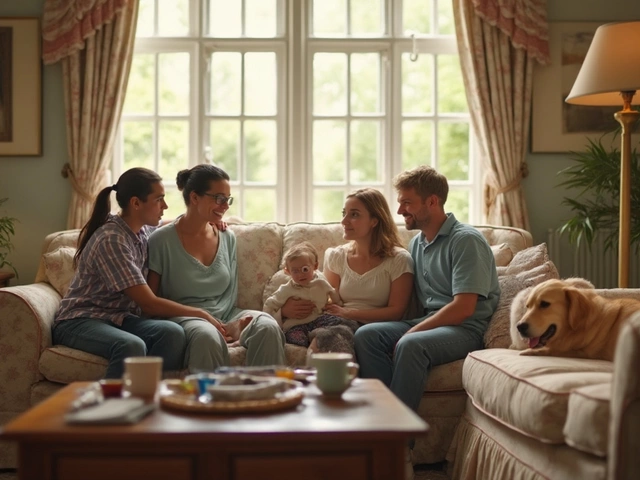Ever wondered why some paintings seem to demand your attention, even before you’ve figured out what they’re showing? You might have been looking at a polyptych—a real showstopper in the art world and the secret weapon of many interior designers. Unlike a regular painting stuck to one canvas, a polyptych spreads out across several connected or separated panels and turns a simple wall into a storytelling adventure. Whether you spot one in a museum or a friend’s living room, you instantly get the feeling that these panels are talking to each other, weaving a narrative bigger than any single image could pull off alone. It’s more than just art; it’s a bold move for anyone who wants their space to look like it wasn’t just thrown together in a day.
The Fascinating History of Polyptych Art
The story behind the polyptych is way older than that trendy split-canvas piece you saw online. This style goes all the way back to the Middle Ages and Renaissance, especially across Europe, where churches were the main place you’d see art. Early polyptychs usually lined church altars, helping religious viewers follow stories about saints or bible scenes during services. People from as far back as the 13th century got used to seeing grand triptychs (three panels) and even bigger polyptychs on church walls—sometimes with as many as a dozen panels!
Some of the oldest and most famous polyptychs came from Italy and Northern Europe. The Ghent Altarpiece, for example, was finished in 1432 and has 12 panels—each with its own part of a larger religious story. The work of Jan van Eyck is still a must-see for anyone who takes a trip to St. Bavo’s Cathedral in Belgium today. Other famous polyptychs include the Isenheim Altarpiece in France, painted in the early 1500s, and works by Hieronymus Bosch and Simone Martini. Back then, polyptychs weren’t just for art’s sake; they were teaching tools for people who couldn’t read. Pictures did all the talking.
As art began to leave the church and land in the homes of the rich, artists experimented with secular subjects, too—landscapes, scenes from everyday life, and portraits. Even now, you’ll see the polyptych’s influence in all sorts of cultures, from Japanese emakimono scrolls to folding screens across Asia.
By the time the 20th century rolled around, artists like Francis Bacon and David Hockney put their own twist on the form, shattering old rules and turning the polyptych into something deeply personal or abstract. These days, both traditional and modern takes on the polyptych fill galleries, homes, and even cool restaurants and offices, showing it’s a style that’s more than stuck around—it’s evolved.
What Makes a Polyptych Unique?
If you line up several canvases on a wall, do you have a polyptych? Not quite. There’s more to this art form than number of panels. A polyptych means every panel is connected, telling fragments of the same story, or pieces of a theme, across each frame. The transitions can be smooth—a continuous landscape stretching from one panel to the next—or they can snap you from scene to scene, each not quite matching but all still feeling like they play on the same team.
Most folks have heard the word “triptych”, which means three panels—think of those three-part vanity mirrors or altarpieces. But you might also run into diptychs (two panels) or more sprawling polyptychs with four, five, or dozens of panels. Some even fold out like a giant pop-up book. Here’s a quick breakdown in a handy table:
| Type | Number of Panels | Common Usage |
|---|---|---|
| Diptych | 2 | Portraits, couples, matching themes |
| Triptych | 3 | Religious art, modern photography |
| Tetraptych | 4 | Abstracts, landscapes |
| Polyptych | 4 or more | Large scale storytelling |
Placement makes a difference, too. Panels can touch, overlap, or even be spaced inches apart. Some artists use gaps to let the wall become part of the art, giving viewers time to absorb each part before moving to the next. Polyptychs can work in any style—realism, abstract, pop art, street art. The power lies in how the artist divides a scene or idea across multiple canvases while keeping that sense of unity. A bunch of unrelated paintings in a row? That’s just a gallery wall, not a polyptych.
What makes polyptychs click with viewers is how they pull you in. You’re not just seeing a picture; you’re physically moving along a series of moments, almost like watching a slow-motion movie. That’s part of why museums and modern designers love them—they get people talking, moving, and noticing things they wouldn’t have seen in a single frame.
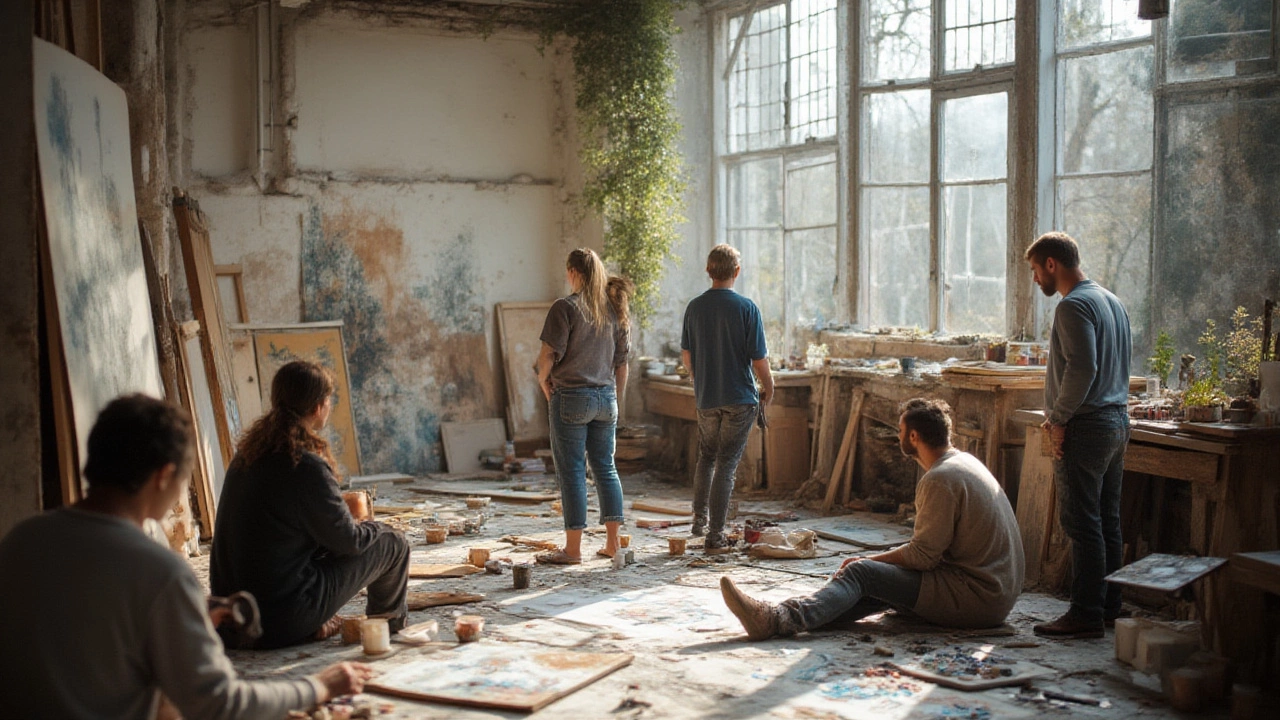
Polyptychs in Modern Home Decor
Here’s where things get interesting. Gone are the days when you had to live in a castle or a church to have a polyptych on your wall. Now, these multi-panel wonders are popping up in homes, condos, studios, and even tiny apartments—wherever someone wants their walls to stand out. You’ll spot polyptychs on shows like HGTV or in snazzy real estate listings because they work magic in modern interiors.
Homeowners and renters love polyptychs because they solve several problems at once. Ever stared at a giant blank wall, unsure what would work? A single small painting feels lost but a polyptych fills the space with balance and drama. The gaps between the panels let you go big without making your room feel cluttered or overwhelming. It sort of tricks your brain into seeing more space rather than less.
Polyptychs also invite DIY solutions. You can buy a ready-made set, hire an artist, or even create your own with canvases from an art store and a little imagination. Many people choose abstracts or landscapes because the scene flows easily from one panel to the next. Photography is another big hit—think cityscapes stretched across four frames, or family beach shots broken into a series for a hallway or staircase wall.
If you’re into trends, large-scale polyptychs with bold colors match the “maximalist” look that’s popular right now. At the same time, minimalist sets in calm tones work wonders in a quiet bedroom or office. Some even use textured panels or mixed materials like wood, metal, or fabric, adding a tactile dimension you can’t get from flat art. Lighting matters, too—try spotlighting the edges to make gaps glow or using LED strips for extra impact. If you’re renting, lightweight panels won’t wreck your walls, and smaller sets can move with you to a new space.
Pro tip: When picking a polyptych for your home, consider your wall size and the mood you want. For big, open living rooms, four or five panels spaced out looks impressive. Tight entryways or bedrooms might work better with three or even just two linked panels. Always hang them at eye level and keep the spacing even. If you go DIY, play around with paper cutouts first to get a sense of placement before putting up any hooks or nails.
Collecting and Caring for Polyptychs
Got your eye on a polyptych? Before you jump in, think about a few things. First, collecting multi-panel art means shopping with a plan. These pieces are about taking up space, so measure your wall carefully (twice!) and sketch out how you want the panels to run—horizontally, vertically, or even as a grid. A surprising number of polyptychs don’t need to be rectangular; some come in all sorts of cascading or irregular shapes, perfect for making a dull wall a focal point.
Polyptychs often cost a bit more than single canvases, mostly because there’s more work and materials involved. Contemporary artists sometimes sell polyptychs as limited editions, especially in the photography world. Check that you’re buying all the panels as a set—sometimes, especially with famous or antique works, they’ve been split up and lost their full effect. Art auctions have seen famous pieces go for millions, but you can find affordable options at art fairs, online shops, and even Instagram artists eager to make custom work just for you.
For long life and lasting color, framing matters. Many modern polyptychs skip the glass and use stretched canvas for a gallery vibe, but classic wood frames add a more formal touch. Whatever you choose, keep the environment in mind—sunlight can fade paint and photos, temperature swings can warp panels, and damp air spells trouble for all kinds of art. Try to pick a spot away from direct sun, heaters, or vents. A soft dusting every few weeks usually keeps things looking sharp.
If you’re moving or redecorating, handle each panel gently and wrap them individually. Even when they hang together, they should travel separately to avoid scratches or cracks. Some artists sign every panel, some sign only one, and others don’t sign at all. If you care about future value, ask for a certificate or provenance—especially if you’re putting down real money. A well-preserved polyptych won’t just hold its appeal; it can actually become a smart investment as artists gain fame or styles cycle back into fashion.
If you buy from a local artist, ask about their cleaning and care tips. For antique sets, sometimes restoration experts can fix faded or damaged spots—just like how museums keep their pieces looking fresh after centuries on display. And when you finally hang up your masterpiece, remember: it’s not just about filling a wall. You’re taking part in a tradition that goes back ages, stretching from cathedral altars to your living room couch.
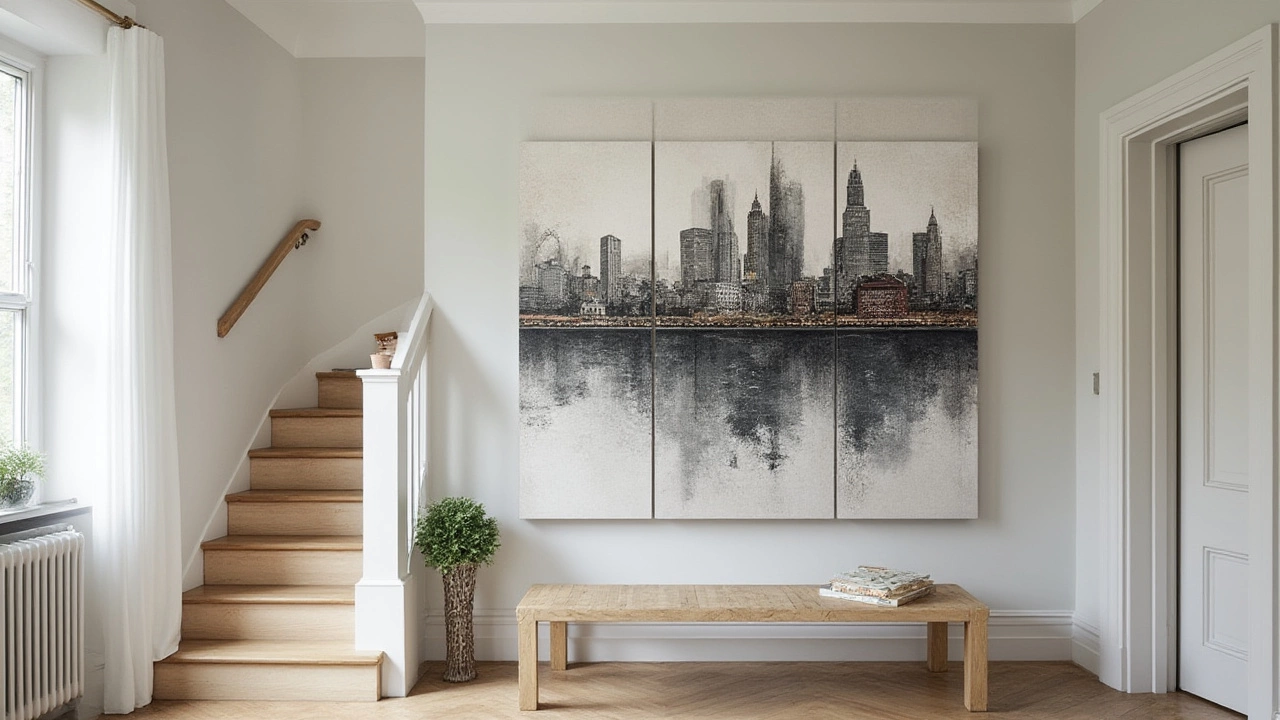
The Impact of Polyptychs in Everyday Spaces
No matter what style your home is—ultra-modern, cozy cottage, sleek city loft—a polyptych can leave a big impression. Art therapists point out that the movement across multiple panels can give you a sense of calm or adventure, depending on the shapes and colors used. If you want a conversation starter, a family photo polyptych on a stair landing guarantees people pause to look. In offices, abstract polyptychs break up boring beige and give visitors something to focus on while waiting. Even restaurants use giant flower or cityscape polyptychs to draw diners’ eyes and get them snapping pics for social media.
Dig a little deeper, and you’ll notice how polyptychs let you play with perception. The viewer’s eye follows a line or color from one panel to the next, creating a feeling of movement and depth that flat art just can’t match. Some designers use this trick to make small rooms feel bigger—spanning a polyptych across a wall creates an impression of width, while vertical panel arrangements add height. Hotels love polyptychs in their lobbies and suites because the pieces look custom, upscale, and impossible to ignore.
No two polyptychs create the same effect. Some tell a story in sequence, like a comic strip; others explore one theme, with each panel giving a different angle or mood. There’s no right or wrong way to enjoy them. People say polyptychs are like the Netflix series of the art world—once you start looking, you can’t help but move from one panel to the next, noticing new details each time.
The rise of digital printing now lets artists and photographers create giant, affordable polyptychs with brilliant color or crisp black and white. This has lowered the barrier for entry, putting museum-worthy pieces within reach of most households. Plus, with endless themes—nature, city lights, family photos, mandalas, abstracts—there’s a polyptych for every taste and every wall.
So, next time you scan your living room or office and sense something’s missing, remember: a polyptych doesn’t just fill a wall. It starts a story, inspires a mood, and invites people in—and you get to decide what that story is, one panel at a time.
